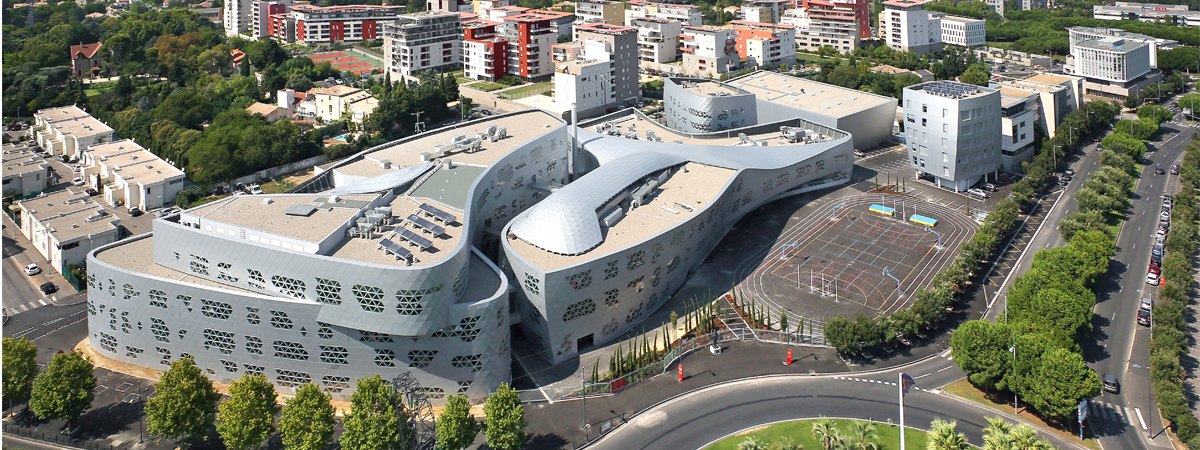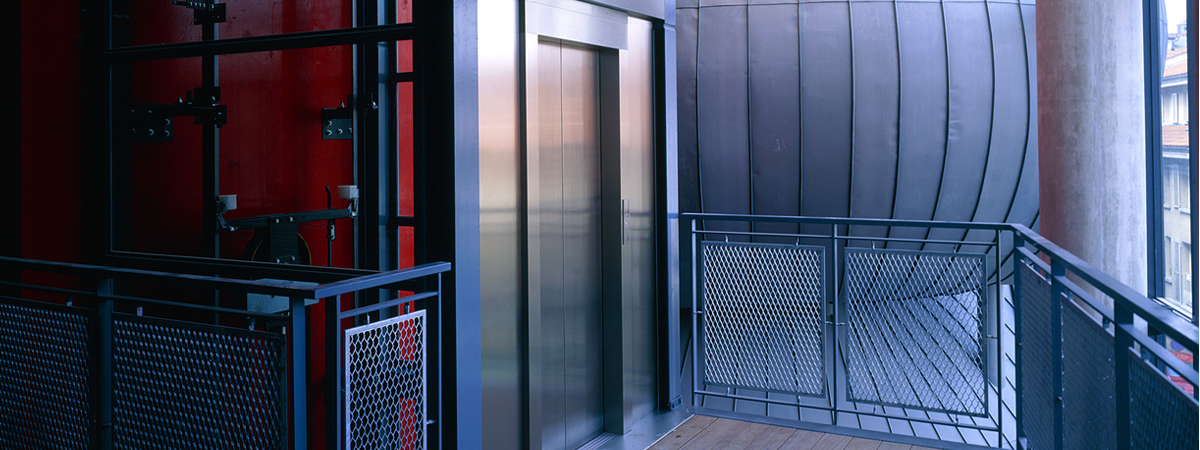Médiateque, Library and Research Center
Rezé, France
The mediateque project originated with a visit with the mayor of rezé to see the Unitè d’Habitation, Le Courbusier’s famous apartment block. The architect noticed a strange building – a big concerte box with tiny apertures for windows.
Resembling a fortress, it was actually a desertet church from the 1960s, its interior room filled merely by two series of stairs converging oddly on what once had been the altar.
The town suggested transforming this structure into a mediateque with library, research centre, exhibition gallery and cafeteria. With any connection between his form and function so clearly severed, the building perfectly embodied the state of modernism today : to transform such a structure into a contemporary institution but also to preserve it, was a much awaited opportunity.
The design keeps the original concreet box intact (only the altar was removed) but transforms its interior into a place of lightness seeking to reestablish a continuity between past and present. Translucent glass wals double the heavy, gray existing form to diffuse daylight throughout the space. Sheathed in zinc and buried about a third of the way into the ground, the box leans to one side and presents one transparent facade to the existing old church.
The exhibition room and the mediateque are linked by the entry hall and the cafeteria.
Glass and steel predominate and architectural barries are avoided as much as possible through the use of ramps and elevators. The reading room is visually connected to the dicotheque and children’s library and the research centre is autonomous but easily accessible.
SITE
Rézè, France
PERIOD
1987 – 1991
CLIENT
Rezé Municipality
ARCHITECT
Massimiliano Fuksas and A.M. Sacconi
TOTAL AREA
2,600 sq.m
Related projects







